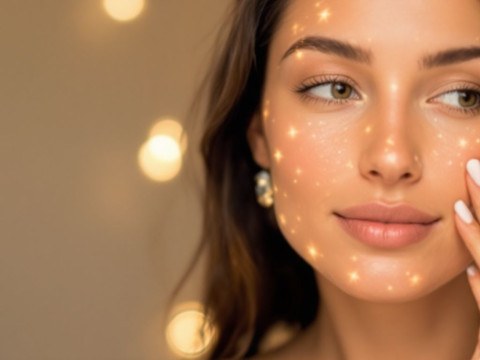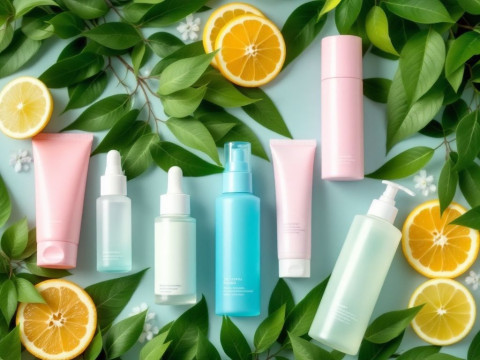Ever notice how some actors always look so impeccably flawless, whether on a gritty drama set or in a casual interview? There’s a certain magic involved, and it’s called screen test skin care. When it comes to stepping in front of the camera, flawless skin isn’t just a lucky miracle—it’s a carefully curated routine. Let’s be honest: the camera is both a storyteller and a truth-teller, and it loves details. So, screen test skin care is all about making sure your skin is ready to give a show-stopping performance of its own.
Why Skin Preparation is Key for Screen Tests
Before diving into the routine, let’s tackle the million-dollar question: why all this fuss about skin prep before a screen test? Well, think of your skin as the canvas, and the camera your audience. Under those bright lights and unrelenting lenses, even the tiniest texture or blemish is exaggerated. Proper skin preparation can help your complexion look smooth, vibrant, and ready for those extreme close-ups.
Skin preparation forms the foundation of any good screen appearance. It minimizes imperfections, ensures makeup application is smooth, and gives you that irresistible glow. And let’s face it, nothing ruins a potentially great camera test faster than a lackluster skin breakout or flaky patches.
Understanding Your Skin is Your First Step
When people talk about screen test skin care routines, it’s tempting to snatch up every product on the latest ‘must-have’ list. Here’s the truth though: knowing your skin type is crucial. Oily, dry, combination, sensitive—the needs vary dramatically across this spectrum. Trust me, understanding what your skin craves makes all the difference.
For oily skin, focus on keeping it balanced without stripping natural oils entirely. Dry skin folks? Opt for deep hydration. And those with the combination type, the trick is juggling—quiet the oil-rich zones while nourishing drier areas. No need to stress if you’re unsure where you fit. A quick selfie in the daylight usually showcases your skin’s behavior or consult a dermatologist for sure-fire clarity.
The Art of Skin Preparation

Step 1: Cleansing
Cleansing is the unsung hero of screen test skin prep, removing dirt, oil, and old makeup residues lingering on your skin. Here’s where customization rules:
- Oily skin: Gel-based cleansers with salicylic acid help manage excess oils without being too harsh.
- Dry skin: Opt for a moisturizing cream or oil-based cleanser that gently cleanses without stripping necessary moisture.
- Combination skin: Balancing cleansers are great, or simply double cleanse specific areas with appropriate formulas.
Step 2: Exfoliation
Bright, glowing skin on camera starts with sloughing off those dead cells. Regular exfoliation is pivotal, but here’s the catch—don’t overdo it! Two to three times a week is a sweet spot. Trust me, irritated or overly exfoliated skin will scream through the screen louder than 3 AM infomercials. Choose products with gentle physical or chemical exfoliants.
Step 3: Hydration and Moisturizing
Hydration is everyone’s friend, regardless of skin type. Look for serums containing hyaluronic acid; this magic ingredient traps moisture into your skin, plumping it to perfection. Follow with a moisturizer suited to your skin type:
- Oily skin: Lightweight, non-comedogenic moisturizers won’t clog pores.
- Dry skin: Richer creams with ceramides provide that much-needed lipid barrier.
- Combination skin: Layer lighter lotions underneath richer creams on different face areas.
Step 4: Prime Time with Anti-Shine
Primers act like an Instagram filter for your face—they smoothen, fill pores, and make sure everything stays where it should throughout the screen test. Choose mattifying primers if you’re battling extra shininess or hydrating versions if your skin leans dry.

The Make-or-Break Daily Habits
It’s worth mentioning that anything you apply directly before a screen test rests upon daily habits. Think of ongoing hydration, sun protection, and nourishment from within as your pre-makeup curtain call. Believe me, your lifestyle shows up on those megapixels!
- Stay Hydrated: Water cleans your canvas inside-out. The adage about water and skin isn’t just fluff.
- Eat wisely: Antioxidant-rich foods like berries and leafy greens prolong youthful vibrance. Plus, healthy fats like avocados and nuts keep cells supple.
- Get Your Zs: Quality sleep means tighter, fresher skin. No under-eye concealer can truly replace well-earned beauty rest.
Makeup Magic Tricks for Camera Test Perfection
Layering is the game when it comes to flawless screen test presentation. Your skin preparation laid the groundwork—smooth sailing from here folks, with the right makeup techniques!
Foundation Feels
Foundation becomes your outer skin layer in screen tests. Apply in thin layers, building only as needed. Comparable to pain-staking art, thin layers conquer unevenness but respect your real skin.
Concealer Credo
Under-eye circles, blemishes, and redness—consider camouflaging them with a creamy concealer and a light touch. Match it with your skin tone perfectly under diverse lighting.

Setting Steps
Finishing powders and setting sprays act as the topcoat to your paint. They minimize shine and gently lock vibes in place for the duration of those back-to-back line readings.
Troubleshooting and Quick Fixes
Face suddenly deciding it has something to say—a breakout appearance, redness invasion, or excess shininess? Manage the situation with these:
- Blemish Evasion: Dab on a Clay-Based treatment or DIY spot cover up, careful not to exacerbate.
- Redness Reduction: Counter with a soothing green-based formula.
- Oil Control: Absorb pulsing shine with blotting sheets or a quick sweeping of translucent powder.
Circling back: embrace patience. The truth is, building a foolproof skin preparation routine for a screen test won’t happen overnight. Much like perfecting an audition monologue, this takes time, effort, and the occasional set of tweaks. Pretty soon though, it feels not just professional, but second nature.
Final Touches and Key Reminders
If you find your skin doing its wind-tossed glamorous hair flip by now, congrats. Properly prepped skin boosts self-assurance, maximizing screen presence. Trust this process as part of your overall screen confidence-building routine. As simple it sounds, remember: prepping skin is worth its weight in production equipment.
Here’s to showing your skin care routine its deserved close-up! Whether today’s the audition of your dreams or just another day in industry grind, a skin prep ritual primes you convincingly under every corrective lens.
Remember, consistency is your budding friend for a glowing, camera-ready complexion every single time. Give it your best, let your skin smile through, and the camera will know it too. Slow fade to satisfied smile. This isn’t just a look, it’s what confidence feels like on camera—and your well-prepared skin knows it.
Frequently Asked Questions
Why can’t I use regular soap, lotion, cream, powder, or deodorant after using chlorhexidine gluconate (CHG) or Hibiclens for skin preparation?
These products may interfere with the CHG or Hibiclens binding to your skin and decrease its effectiveness. Using regular soap, lotion, cream, powder, or deodorant after CHG or Hibiclens can reduce the antiseptic properties of the skin preparation[3][1].
Why do I need to apply CHG or Hibiclens to my entire body when the surgery is only on a small area?
The microbiome is present everywhere on the skin, and applying CHG or Hibiclens to the entire body helps decrease the overall bacterial presence, reducing the risk of surgical site infections[3][1].
What should I do if I experience a rash or skin irritation after using CHG or Hibiclens for skin preparation?
If you develop a rash or skin irritation, do not proceed with the second skin cleansing and notify the staff in the pre-operative area on the day of surgery. Your doctor or pre-operative team may instruct you to use a different soap or apply the CHG or Hibiclens only to targeted areas[1][3].
Which surgical prep is most effective for skin preparation before surgery?
While there is no single universally accepted best prep, chlorhexidine gluconate (CHG) and povidone-iodine are the two most commonly used solutions, both offering comparable antimicrobial activity. CHG is noted for its prolonged residual activity on the skin’s surface[5].
References










